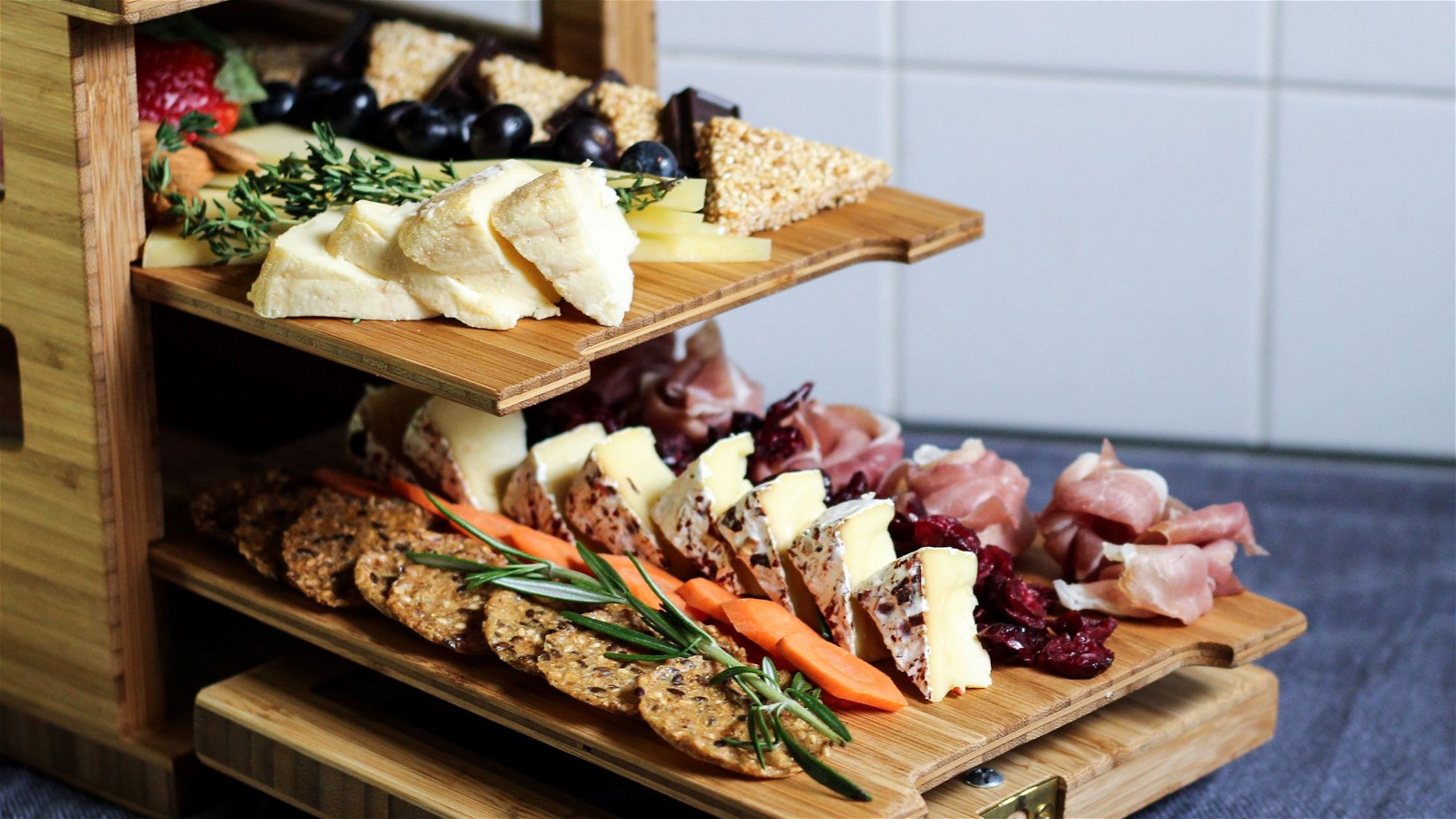How to Build a Cheese & Charcuterie Board Recipe
5.0
(1)
Your folders
Your folders
Prep Time: 30 minutes
Total: 30 minutes
Servings: 6
Author : Jessica Sennett

Ingredients
Export 22 ingredients for grocery delivery
Instructions
Step 1
Using a chef's knife or skeleton knife, slice the brie or camembert into pie wedges and arrange in a line or circle on your board. The rind is edible on the cheese and looks best for plating when kept intact. Precuts slices are best so each person can get an equal serving. But if your brie or camembert is especially ripe, our recommendation is to keep it whole. It can be striking with honeycomb placed on top of the whole wheel or with a sprig of thyme or rosemary as an accent piece.
Step 2
Aged artisan cheddar has beautiful, natural striations to its texture that is best served with a spade knife or Cheese Grotto hybrid knife. Keep half of the wedge mostly whole (known as the base piece on the board), and break off 10 chunks with the knife, allowing the texture of the cheddar to showcase itself. If the wedge is very young and is less crumbly, this method may not work. Alternatively, you can use a chef's knife to cut planks of the entire wedge and stack them in a straight line, but fanned out.
Step 3
Alpine cheeses, like Alpha Tolman from Jasper Hill Farm, have a natural-washed rind to them that can be beautiful showcased on a cheeseboard, in moderation. If working with a triangular-shaped piece, slice the rind off both the long sides of the wedge while preserving the back edge rind. Then, slice triangular slices with the rind on the edge. These pieces can be layered across the board as a river, or they can be stacked and fanned out. If the wedge is a block shaped with no rind, you can follow the same recommendation as the young cheddar block, mentioned above.
Step 4
Most blue cheeses are soft and are best kept whole on the board. Place a spreader knife or skeleton knife next to the cheese or into the cheese wedge itself for serving. When plating the rest of the board, be sure to leave enough space around the blue for cutting and serving.
Step 5
Fold the prosciutto into ribbons or twist into a rose shape. Place them close to the brie or camembert, as a pairing of brie and prosciutto is perfectly balanced.
Step 6
Fold your salami into a triangular shapes and build a salami river across the board, placing them on the board in a line as you fold. To hold the river in place so the folds do not unravel, you can sandwich two of your small vessels on either end of the salami river, or you can use the cheese wedges to prop them up. Alternatively, layer your thinly sliced salami around the inside of a shot glass until it takes the form of a salami rose. Remove from the shot glass, and place next to the cheddar.
Step 7
Your small vessels should also be spaced out along the board to provide the mot aesthetically pleasing arrangement.
Step 8
Fill one small vessel with olives so their brine is contained. Olives pair wonderfully with cheddar and blue cheese, so we recommend placing them close to these cheese arrangements.
Step 9
Fill the second small vessel with cornichons so their brine is contained. Cornichons pair wonderfully with alpine cheeses, so we recommend placing them close to these cheese arrangements.
Step 10
Fill the third small vessel with honey and or fig preserve, if not using these spreads for a dramatic display over a whole wheel of brie or camembert.
Step 11
If you have smaller spoons to place into each vessel, that will complete the look. If not, be sure to have spreaders available on the board when serving.
Step 12
Use the nuts to fill open space on the board near the harder cheeses, as roasted nuts naturally bring out the nuttiness in cheddar and alpine cheeses.
Step 13
Use the dried fruit to fill open space on the board near the blue cheese, as dried fruit provides a condensed sweetness and acidity that balances blue cheeses' mineral and earthy richness.
Step 14
Use the fresh fruit to fill open space on the board near the brie or camembert. Fresh berries are a wonderful, bright accompaniment that balances out the creamy paste and mushroom-y rind of these styles.
Step 15
Stack crackers flat, and then turn on their side as a compact disk, inserting this disk upright in between cheeses and accompaniments.
Step 16
Alternatively, plate crackers on a separate plate or in a basket so that the cheeses and accompaniments can stand on their own on the finished board.
Step 17
Fresh herbs and edible flowers give a finished look to any cheese board. Lay a fresh herb sprig or flowers atop of the brie or blue cheese, and fill open cracks in the board with this as well.